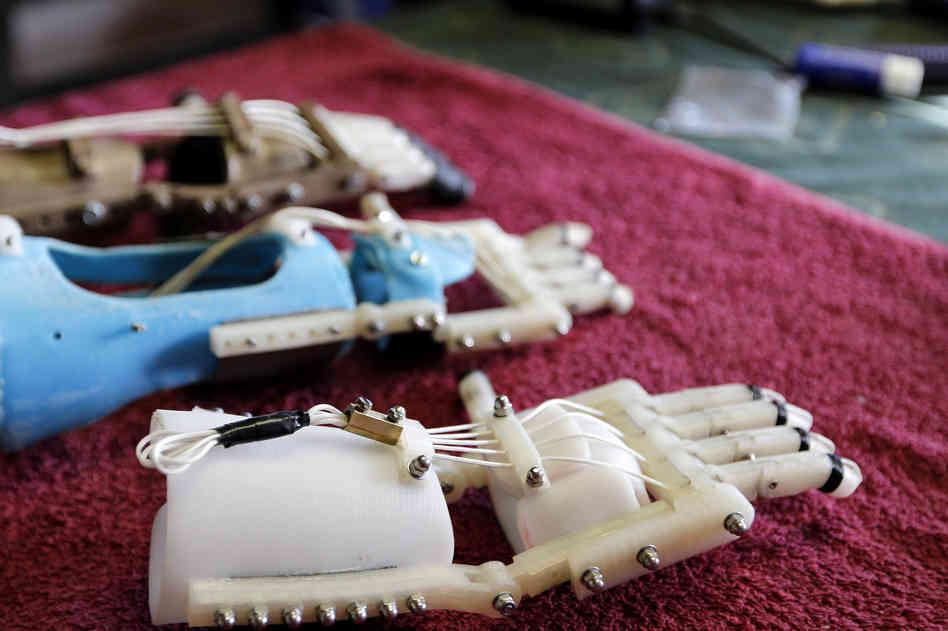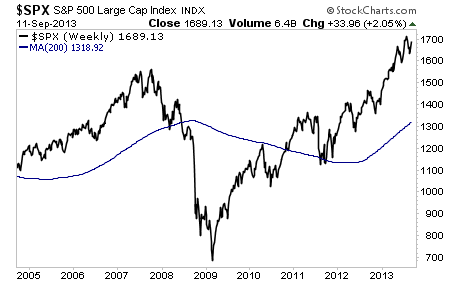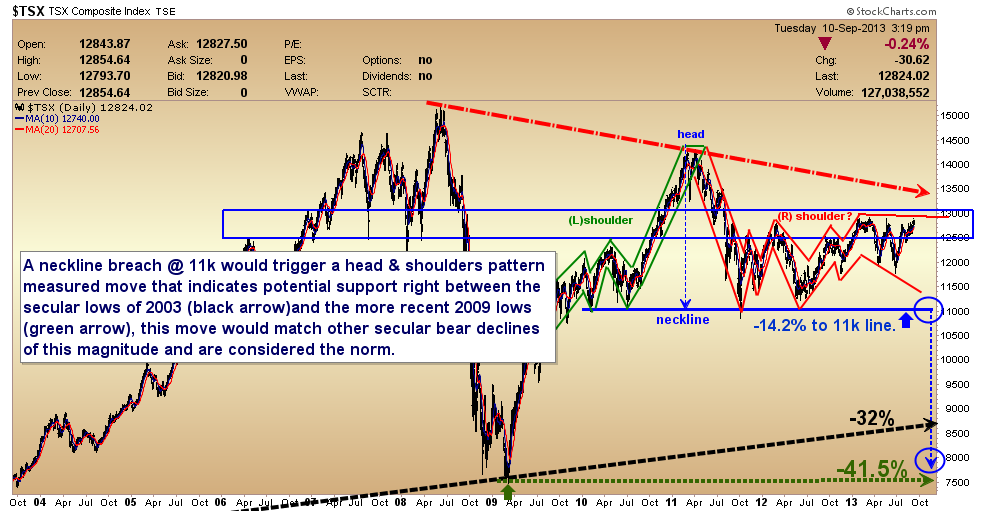Stocks & Equities
One market that’s set to pop 28% this year, according to an industry expert…
“The tipping point is that magic moment when an idea, trend or social behavior crosses a threshold, tips and spreads like wildfire.”
— Malcom Gladwell, The Tipping Point
3-D Printing: Richard’s $2 Billion Dollar (Severed) Hand
Hype or harbinger of new-Western prosperity?
Profit windfall or investor sinkhole?
New-age appliance or subniche cult item?
We leave it for you to decide… but one thing’s certain: Now that the mainstream press has begun asking these questions about 3-D printing, we’ve reached a tipping point. Search “3-D printing” in Google News and you’ll get 30,800 stories from the past month alone.
In this publication, we’ve called it “The New Industrial Revolution,” “The Fourth Technological Revolution” or simply the “Click. Print. Revolution.” Take your pick.
The most recent story before us: the 3-D-printed “Robohand.”
Richard Van As, a South African carpenter, lost four of his fingers to a circular saw, reports The Associated Press. An artificial limb — one that could detect the muscles’ electrical impulses and move — would have cost him tens of thousands of dollars. Sadly, he was unable to afford that.
“After my accident, I was in pain, but wouldn’t take painkillers,” he told AP.
“I barely slept, and the more pain I had the more ideas I got. Sometimes you have to chop fingers off to start thinking.” Soon after, Van As teamed with an Ivan Owen from Seattle.
 10,000 miles separated Van As in Johannesburg from Owen. But with the help of two 3-D printers donated by MakerBot, the two created their own “Robohand” prosthetic. They were able to cut the prototyping time from a week to just 20 minutes. And the cost? Just $500… more than a 95% discount.
10,000 miles separated Van As in Johannesburg from Owen. But with the help of two 3-D printers donated by MakerBot, the two created their own “Robohand” prosthetic. They were able to cut the prototyping time from a week to just 20 minutes. And the cost? Just $500… more than a 95% discount.
“Maybe Robohand took the 3-D printing world by surprise with what we’ve done,” says Van As in a MakerBot YouTube video, “but if you have a look at the broad spectrum of it, I think that printing a mechanical device that can aid you when you’ve lost fingers, is a tiny little part of it. It’s a big, big picture, this 3-D printing…”
It’s not just Van As who sees potential in this space. “The idea that [3-D printing] is a gimmick, suitable only for hobbyists, looks ever less likely,” reads the latest Economist.
“Cheap 3-D printers for consumers are selling fast, but account for just 5% of the market. Many printers are still used for models and prototypes, but in 2012, more than 25% of the items emerging from 3-D printers were finished parts, up from 4% in 2003, according to Wohlers Associates, a consultancy.”
Wohler predicts that the 3-D printing industry will grow by 28% this year. But he doesn’t buy into the “Click. Print. Revolution” idea.
The company’s eponymous president says, “It’s unsettling to read this oversimplification where you push a button and out pops a shiny new thing,” he posted on his company’s site.
Despite many designs being accessible and simple to print (the websiteThingiverse.com comes to mind), Terry Wohlers argues that the process requires intensive design. We respect his authority on the topic. After all, Wholers’ 297-page industry market report is the go-to publication on additive manufacturing.
“The part you print won’t be as good as the part you order,” Nick Allen adds in an interview with USA Today. Mr. Allen, believe it or not, is both a 3-D printing skeptic and the CEO of a 3-D printing company, 3D Print UK. He thinks that expectations of 3-D printing have been set too high.
“We now live in a world where we can get something to our door by 9 a.m. if we order it at 5 p.m.,” he says. “Printing takes time.”
Au contraire, parries our good friend Josh Grasmick.
3-D Printing for Mature Audiences Only
“Today, I’ll show you the financial perfect storm brewing in the tech sector,” he writes below. “You are in for a hell of a ride.”
In today’s episode of The Daily Reckoning, Josh outlines three forces that will intersect in the next 12 months. He believes they’re set to create a windfall for early investors in the 3-D printing space. “This is it,” he writes: “the calm before the perfect storm.”
….read the entire article HERE

 Wars tend to drive markets. If the war goes well (Gulf Wars 1 and 2, Kosovo), the markets tend to rally. If war is unexpected or appears to be going badly, markets tend to fall (start of WW1, Pearl Harbour). The 20th century has been called “a century of wars”. That could apply to almost any century in history but the 20th century is estimated to have seen 160 million die in wars. That was the most ever. The global population was also at its highest and firepower at its most deadly, including the first (and so far only) use of an atomic bomb.
Wars tend to drive markets. If the war goes well (Gulf Wars 1 and 2, Kosovo), the markets tend to rally. If war is unexpected or appears to be going badly, markets tend to fall (start of WW1, Pearl Harbour). The 20th century has been called “a century of wars”. That could apply to almost any century in history but the 20th century is estimated to have seen 160 million die in wars. That was the most ever. The global population was also at its highest and firepower at its most deadly, including the first (and so far only) use of an atomic bomb.
With the recent focus on the potential for a US military strike on Syria, there are questions as to how it could impact the markets. Until recently both gold and oil were rising, the US$ was rising and the broader markets were wobbly. As soon as the threat of imminent war abated, gold and oil fell, the US$ fell and the broader market rallied.
An examination of major past wars and how the markets responded might be interesting. I do not suggest that any new war would develop similarly, or that an attack on Syria could lead to a world war, although given that the US is on one side and Russia on the other, there is a risk of unexpected twists. In some respects it has become a US/Russia confrontation.
…. the full analysis & charts including conclusion HERE

 Tops never form cleanly.
Tops never form cleanly.
I’ve made the mistake of attempting to call a top on the “dot” in the past. The reality is that anyone who attempts to do so is exercising their ego more than their judgment.
Market tops occur when investor psychology changes. But it’s not a clean shift. Investors, like any category of people, are comprised of numerous groups or sub-sects: some get it sooner than others.
In this sense there are certain tell tale signs that a top is forming. This doesn’t mean a top is “in” nor does it imply a specific timeline for a top to form (say a week vs. a few weeks).
However, there are clear signals that appear around tops. And I want to alert you that multiple ones are flashing right now.
…..read more HERE

With the Taper off, Recession on? – (we are hardware store to the world after all)
Nonsensical diversions aside: this big picture view of the Canadian broad market TSX ( we are hardware store to the world after all) is not looking so perky, continuing to wobble around the 12,800 level now since the fall of 2011 (well actually since 2006 but why quibble). 11,000 remains the downside neckline test needed to finally resolve whether this secular bear will complete the massive head and shoulder’s pattern that has been looming over it for the past 2 years. Resolution has been a long time pending but market forces move at a pace all of their own. No one gets to command timing–certainly not central banks or governments. All we can do is time our own capital’s exposure to the price cycle. Such is the test of public markets: they are perfectly adept at driving the weak, impatient and unaware into assets just as price risks are the highest, while scaring them out once prices have collapsed once more. Heartbreak hill indeed.
Click HERE or on Chart for larger view

U.S. stocks rose, giving the Dow Jones Industrial Average its biggest gain since July 11, as exports from China topped forecasts and corporate acquisitions fueled optimism in the world’s largest economy.
The equities gauge has rallied 17 percent this year as the Fed continued to provide stimulus to the economy. A report Sept. 6 showed payrolls in the U.S. climbed less than projected in August and gains in the prior two months were revised downward, fueling speculation that any Fed move to taper its stimulus program will be limited.
….read more on the Fed, Apple, the President in this detailed article HERE













